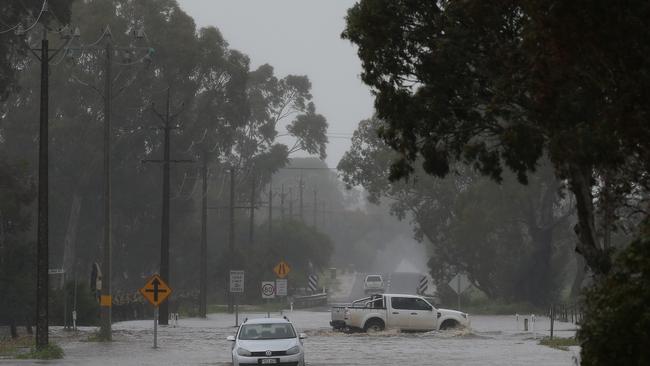Hospitals narrowly avoid chaos, traders count cost, SA spirit shines through, forecast for more rain
A QUICK-thinking doctor has saved the life of a tiny, premature baby at the Flinders Medical Centre when the hospital’s power was cut on Wednesday.
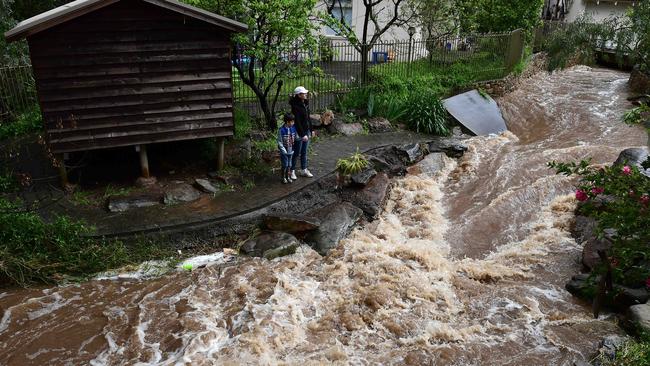
SA News
Don't miss out on the headlines from SA News. Followed categories will be added to My News.
- ROLLING COVERAGE: Latest on SA’s wild weather
- WEATHERILL: Little could have prevented blackout
- MORE TO COME: State bracing for more storm fury after blackout
- HOW IT HAPPENED: How we reported the day’s events
A QUICK-thinking doctor has saved the life of a tiny, premature baby at the Flinders Medical Centre when the hospital’s power was cut on Wednesday.
The doctor, who works in the hospital’s neonatal unit, realised the baby’s oxygen supply had stopped during the storm after a fuel pump powering the FMC’s back-up generator failed and parts of the hospital were forced to use back-up battery power.
The staff member, who has been praised by health authorities, began to use a hand-ventilator on the infant and has been credited with saving the baby’s life.
The Advertiser understands the manual ventilator was used for up to one-and-a-half hours on the patient.
SA Health Interim Chief Executive Vickie Kaminski said late on Thursday night “piped air provided to the infant was lost after the generator failed”.
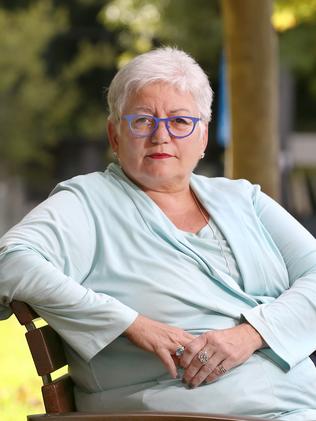
“Thankfully, within seconds, the infant was stabilised by our quick-thinking clinicians using a manual ventilator,” she said.
“Our clinicians at Flinders are in close contact with the family of the patient and are providing appropriate support and information to them as their child recovers.”
Earlier on Thursday, back-up hospital generators failed, non-urgent elective surgeries were postponed and a woman narrowly avoided going under the knife just moments before the state was plunged into darkness.
Widespread outages cut electricity to every hospital in South Australia on Wednesday, forcing back-up generators to power essential wards, including intensive care units.
Potential tragedy was averted at the Flinders Medical Centre despite the failure of its back-up fuel pump. To cope, 17 intensive care patients were transferred to nearby Flinders Private Hospital while the rest of the hospital was forced on to battery power.
Medical staff at the FMC used hand-ventilators to aid the breathing of seriously ill patients as they were transferred to the nearby private hospital before mains power was restored just after 7pm.
One FMC patient was on the operating table, prepped and ready for surgery when power was cut. Her surgery was postponed.
Across the system, hospital lifts stopped working and doctors and nurses used torches to help them at work in wards.
At the Women’s and Children’s Hospital, there were “minor” water supply issues in two areas.
SA Health interim chief executive Vickie Kaminski was quick to hose down fears patients’ lives were at risk during the blackout.
“We’re now on mains power, right across the hospital system,” she said yesterday.
“All of the lifesaving equipment is on battery backup and had many hours of battery backup ... (the FMC fuel pump) was replaced very quickly.”
Ms Kaminski said hospital back-up generators were regularly tested but “the fuel pump issue was not something that had been pre-determined”.
Yesterday, SA Health issued a statement saying the hospital system was safe and running normally. Elective surgeries were postponed and many will be cancelled today.
“Patients impacted by postponements will be contacted by their hospital to advise them, and these appointments will be rescheduled as soon as possible,” the statement read. Ms Kaminski said hospitals had helped “a number of people” with CPAP (breathing machines) who were unable to access their devices at home.
SA Ambulance reported a 491 per cent increase in calls during yesterday’s storm compared with the same time last week. Health authorities are reminding South Australians to only call triple-0 and present to hospital EDs in the case of a “genuine emergency”.
Opposition health spokesman Stephen Wade said “the storm highlighted a whole series of problems across the health network”.
Traders avert a wipe-out
By Alexandra Economou
IN the hours before nature unleashed its full fury on Wednesday, supermarkets across South Australia were preparing for the worst.
With perishable products their pressing concern, staff frantically refrigerated tonnes of stock to ensure minimal impact.
Foodland SA chief executive Con Sciacca said its 100-plus stores across metropolitan and regional SA were proactive about food storage.
“Stock which is in open (refrigerated) cabinets, that are open to the air, are put into storage to ensure the quality is not impeded,” he said.
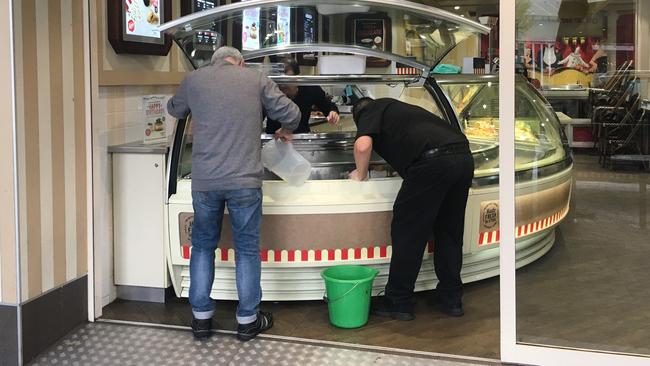
“It’s a bit too soon to call (what the overall impact will be) but we do know there will be some discarded product because our procedures are very rigid around the temperatures of products.”
He said it was too early to count the overall cost of the blackout, but said most of its stores opened yesterday.

A spokesman for Woolworths said its in-store teams moved quickly on Tuesday afternoon, putting precautionary measures in place to “ensure as much existing stock as possible remained refrigerated”.
“We continue to work hard during this time to ensure our customers can continue to visit their local store and pick up their favourite items,” he said.
A spokeswoman for IGA parent company Metcash said some stores were impacted and others were not.
The good, the bad and the heroic
By Adam Langenberg
THE resilience, spirit and patience of South Australians in the face of an unprecedented extended power outage has been praised by state leaders.
Premier Jay Weatherill said there had been an “overwhelming sense of community spirit” on Wednesday evening as people tried to grapple with the after effects of a storm, which will leave some households without power for days.
Police Commissioner Grant Stevens and Mr Weatherill praised drivers for taking care, with no reports of fatalities or serious injuries received as a result of the conditions.
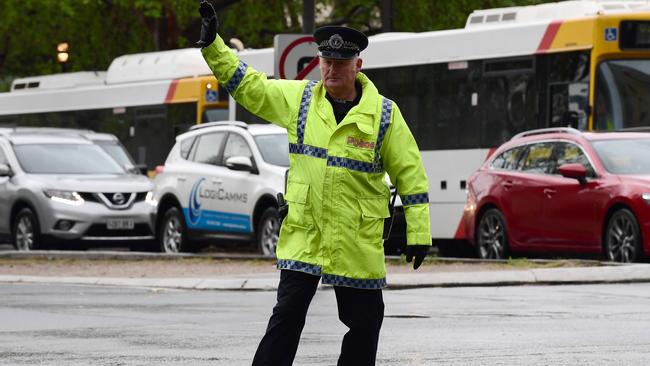
The power outage left motorists navigating wet and slippery roads in poor visibility and largely without traffic lights.
Commuters faced lengthy delays getting home, with train and tram services cancelled altogether. But Mr Stevens said motorists had displayed “significant patience” in dealing with congested roads.
“We didn’t see any aggression, we didn’t see any collisions of a significant order … and that’s a credit to the driving community,” he said.
“People heeded the warning to cease non-essential travel.”
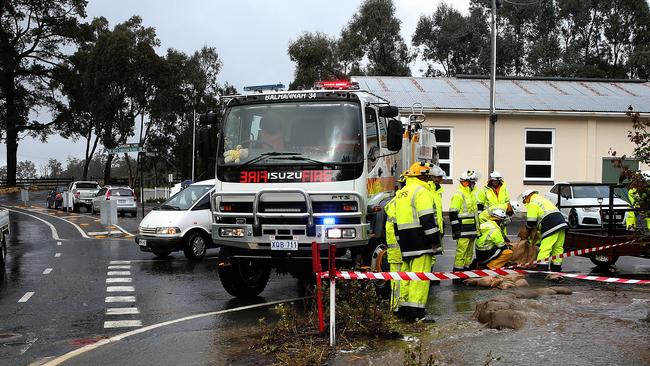
Mr Stevens said police had received just one report of looting, in the state’s South East, but said he would not comment further until it had been investigated.
He said there had been no increase in reported crime.
Two men were arrested in Mt Gambier after police spotted them shining torches into shop windows on Wednesday night. They were allegedly found in possession of tools including bolt cutters, torches, knives, wire cutters and beanies.
A Mt Gambier man, 41, and a Millicent man, 32, were charged with going equipped.
Mr Weatherill said the isolated incident was “disgusting and regrettable” and not representative of the “wonderful” community response he saw.
Treasurer Tom Koutsantonis also praised the resilience of South Australians.
“I was quite proud of the way we conducted ourselves – we just got on with it,” he said in State Parliament yesterday.
As the state was thrust into darkness, volunteer emergency service agencies and police worked through the night to help keep the public safe.
Acts of God - The Second Coming
By Meagan Dillon
THE weather pattern responsible for the state’s wet and wild spring is not going away, with more unseasonal rainfall tipped for the months ahead.
Warmer waters in the Pacific and Indian oceans have created more moisture in the air, bringing increased low-pressure systems, the Bureau of Meteorology says.
BOM extreme weather manager Philip King explained: “In winter and spring we get fairly frequent troughs ... and because of this moisture they’ve had more of a chance to pick up into major weather systems.”
He said the intense system that devastated the state on Wednesday was “complex”, with a secondary system rotating around the major low.
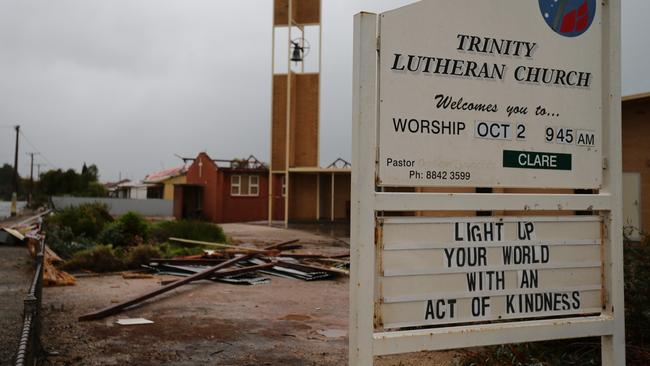
A less intense system would hit the state again on Sunday, bringing with it more rain and wind, Mr King said.
“Our outlook for October, November and December is for continuing wet conditions,” he said.
“That pattern in the Indian Ocean is well established and really driving our weather pattern at the moment – with increased moisture and increased rain coming in from WA.”
He said there would still be warm days over the next three months but they would trigger more wet weather. “Every time it warms up, we’ll get those thunderstorms,” he said.

ZEN Energy chief Professor Ross Garnaut said SA could expect more extreme weather in the future due to climate change.
He said there were options available to restore power supply quicker in the event it happened again.
“It’s inevitable that a centralised power system distributing electricity through the grid will be vulnerable to extreme weather events,” Prof Garnaut said.
“We can reduce that vulnerability with more storage of electricity. In North America and Europe, it’s becoming more common to use large, modern batteries to absorb surges of energy ... to stabilise the grid in these circumstances.”

